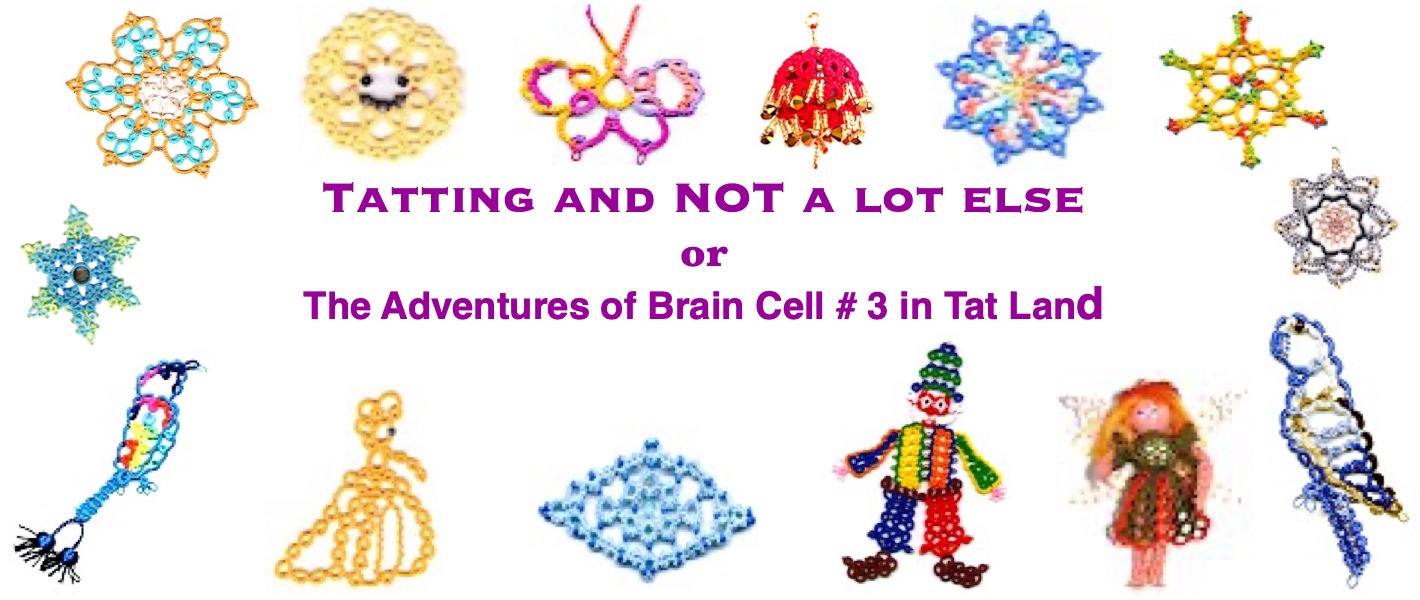The following is how Babette worked the little doodle on the left. It's not the way I did it but it's another way. Thanks for taking up the challenge Babette. Anybody else got any ideas?
Using your colour scheme: Started first green chain using a safetypin to leave vsp made chain of 3ds p 3ds, then turned and made white chain with picots and the centre thrown ring. Joined white chain to starting vsp of green chain. The rest was straightforward chains, split rings and normal rings, making sure the lower two rings were joined to the same picot. Perhaps you could put these notes into a more comprehensible set of instructions.
Once I had enlarged the picture of your doodle enough to see exactly where the picots joined the rest was quite simple, only the actual stitch count eluded me as the picture was not clear enough for an accurate count.
Another message from Babette on the third one (the face). She says -
Bearing in mind it’s 35deg C outside, England v NZ 20/20 is on television and we are almost through the 2nd bottle of wine (a woman after my own heart!) and supper has not even begun yet.
I roughly made motif in two parts. The first with two colours, the split ring, four small rings and 5 downward picots, the 5th also the join/finish. Second part with two shuttles wound with pink thread, joined at finish of first part, then chains and joins up to the first two small rings. Then split chain with split ring joining next split ring and split chain before finishing second side to match first, joining beads where shown. Very rough and ready description of method and probably more complicated than your original but it worked. The motif is not worth scanning in primarily because I was not particularly accurate on stitch count, picot size, tension and finishing off the threads.







